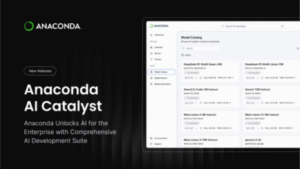Business leaders are paying closer attention to climate risk as shifting temperature patterns, inconsistent precipitation, and more frequent weather disruptions influence planning and operations. These conditions affect supply reliability, financial projections, and long-term strategy. As a result, climate intelligence has become increasingly relevant in senior-level discussions about resilience and growth.
Why Climate Variability Matters for Corporate Risk Models
Many long-established risk models were built during periods of stable weather. Today, companies face greater volatility in the form of disrupted supply routes, altered seasonal demand cycles, and increased exposure to physical hazards. These changes have encouraged risk teams to reconsider baseline assumptions and develop a clearer view of how environmental conditions influence performance.
Organizations now assess risk across several time horizons. Operational groups monitor short-term developments that can disrupt daily operations, while strategy and finance teams study long-term changes that may affect asset values or regional investment decisions. This broader perspective has strengthened the need for data that captures ongoing climate trends rather than isolated events.
Climate Intelligence as a Strategic Input
Climate intelligence provides leaders with structured information about temperature trends, rainfall patterns, and other indicators that shape operational outcomes. This information supports decisions related to sourcing, distribution, facility planning, and capital deployment. When leaders understand long-term climate behavior, it becomes easier to evaluate which regions are stable enough to support expansion and which require additional safeguards.
Reliable climate insight also helps departments maintain alignment during periods of uncertainty. When supply chain, procurement, finance, and strategy teams work from the same climate outlook, they can build plans that withstand fluctuations and avoid unexpected exposure to environmental pressures.
Using Climate Data to Inform Long-Term Assessments
Long-term climate data allows companies to examine how conditions have shifted over multiple years. These insights help leadership teams review capacity planning, growth opportunities, and geographic diversification. Scenario planning becomes more effective when based on patterns rather than assumptions.
Tools that can create annual or monthly climate summaries provide analysts with a clear view of long-range developments. This information helps strategy teams determine whether changing conditions could influence market stability or operational suitability. Once integrated into planning cycles, climate summaries contribute to stronger forecasts and more grounded expectations about future environments.
Technology and Analytics Supporting Better Climate Foresight
Modern climate analytics rely on advances in data collection, modeling, and processing. Satellite observations, sensor networks, and machine learning models offer greater detail about how conditions shift across regions and seasons. These improvements help risk teams identify subtle changes that may not appear in short-term data.
Independent reporting on climate adaptation provides further context. A World Bank feature on climate-shock adaptation highlights how organizations use detailed climate information to evaluate exposure and develop practical strategies for long-term stability. The feature underscores the value of data-driven planning for companies operating in climate-sensitive markets.
The growing availability of reliable analytics supports teams that assess exposure across supply networks or examine how gradual shifts could influence operating conditions. With more accurate information, leadership can shape long-term plans with greater confidence.
How Leading Companies Are Strengthening Their Risk Strategies
Companies that treat climate intelligence as part of their broader risk approach are gaining a clearer understanding of how environmental changes influence business performance. Strategy teams rely on multi-year climate assessments during investment discussions, and operational groups review whether current locations and distribution channels remain suitable under changing conditions. These steps reflect a wider push to reinforce resilience during uncertain periods.
Many organizations are also adopting more refined forms of climate analysis, including advanced models that provide insights into investment suitability and regional exposure. A recent feature on investment-grade climate analytics explains how enhanced modeling can support leadership teams as they evaluate strategic priorities. These insights allow decision-makers to consider a broader set of variables when developing long-term plans.
As climate intelligence becomes a regular part of strategic evaluation, companies strengthen their ability to anticipate changes that could affect operations or financial performance. This approach supports thoughtful planning and improves decision consistency across departments.
Conclusion
Climate intelligence has become a valuable tool for organizations seeking a clearer view of the conditions shaping their long-term prospects. As more companies incorporate climate data into strategy, risk, and operational planning, they build the capacity to assess future challenges with greater accuracy. This approach strengthens an organization’s ability to prepare for a range of outcomes and supports decisions that reflect both current realities and long-term expectations.
Article received via email






























